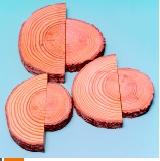Biosolids are the product of the transformation of what you'd see in your toilet to what would be considered "fertilizer". The process of creating biosolids goes something like this:
- the wastewater travels from your house to a sewage treatment facility
- the solids are sent to enclosed tanks where microorganisms consume them as food
- if necessary, the solids are treated with lime to raise the pH level and eliminate objectionable odours
- the solids are now ready to be used as fertilizers
You may be thinking that despite the fact that the feces is treated and what not, it's still disgusting to be smeared all over your food, even before it reaches your plate. But in many places around the world, raw, straight-out-of-the-drainage-system, human feces is used as fertilizers. This is the case in many 3rd-world countries, where people can't afford expensive chemical fertilizers. This results in about 2.2 million people dying from diarrhea-related diseases, such as cholera from farmers' crops absorbing disease-causing bacteria, and many consumers eating the produce raw and unwashed.
 |
| These cuts are from douglas fir trees. The ones on the left show the growth of the trees where biosolids were applied, while the ones on the right are of those where no biosolids were used. |
So, now that we know how biosolids are produced, and how feces are used in other parts of the world as fertilizers, what do we do with the biosolids, other than using them as fertilizers. Most of the time, biosolids are either sent to the landfill, or are incinerated. But think about it, what is the most eco-friendly way to dispose of/use this product? Through land application!
In conclusion, I believe that the Western world has influenced us to believe that though our feces have been broken-down to the point where they will benefit us, it would still be disgusting to have them even go near our food. But since the most eco-friendly way to "dispose" of biosolids is to use them as fertilizers, I believe that they should be used on greenery such as trees and golf courses, that way society will be a greener place!
Sources
Sources
- Source One
- Source Two
- Source Three
- Source Four
- Source Five
- Source Six
- Source Seven
- Source Eight
- Source Nine
Comments




